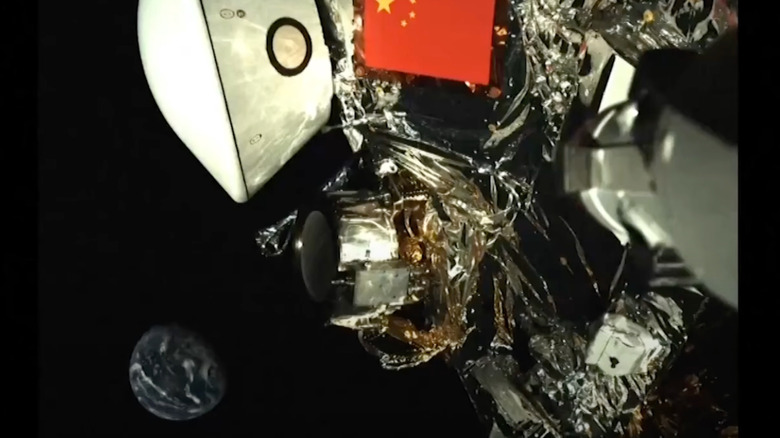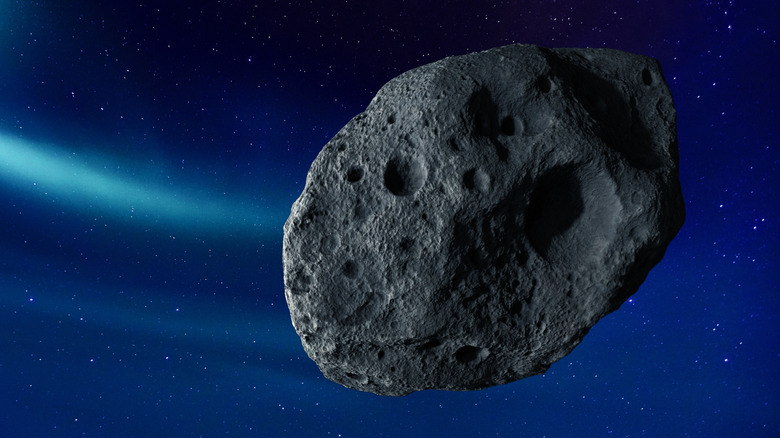China's Tianwen-2 Probe Takes A Selfie With Earth On Its Way Out Into The Universe
The very first image of Earth from space was taken on October 24, 1946, from a German-made rocket launched from New Mexico. The U.S. seized the rocket at the end of World War II and studied its technology. Space exploration has advanced considerably in the subsequent decades, and the photographs of our planet now are very different from that first grainy, black-and-white image.
While the U.S. is the biggest player when it comes to spaceflight and exploration, with NASA and companies like SpaceX deeply engaged in research and exploration, China has a robust program for building and operating satellites, launch vehicles, and spacecraft, and it often collaborates with other countries. It's had missions to the moon and Mars, and the latest one is currently on track to explore an asteroid. First, however, it took a picture of home.
The Tianwen-2 probe is the second in the Tianwen program. The Chinese name translates to "Questions to Heaven", and it is already collecting data en route for its main mission. China launched the probe in May, and just one day after leaving Earth, it took a photo from about 366,620 miles away. It later took a selfie with Earth in the background from about 26.5 million miles away using a monitoring camera on its robotic arm. The mission will continue through 2035.
The mission of Tianwen-2
Tianwen-2's first mission is to rendezvous with and collect samples from asteroid 469219, also known as Kamoʻoalewa. This asteroid is called a "quasi-moon" because it orbits the Sun in a similar path to Earth. It was likely once part of Earth's moon until around 1-10 million years ago, and was discovered relatively recently in 2016. China's probe should reach the asteroid in July 2026. It will spend a few months investigating Kamoʻoalewa and collecting samples, which it will bring back to Earth in 2027.
That special delivery will be attained with a reentry capsule, because Tianwen-2's work will not yet be done. In a move straight out of Star Trek, it will slingshot around Earth and head back out into deep space. Its second mission is a meet-up with main belt comet 311P/PANSTARRS, expected around the year 2035, to learn more about how our solar system formed and evolved.
Tianwen-2 is part of a larger mission. The first phase, launched in 2020, included a Mars orbiter and rover. Tianwen-3 will visit Mars and return samples back to Earth, and Tianwen-4 will explore Jupiter and its rings and moons. With NASA's planned mission to Mars in serious jeopardy, Tianwen-3 may just make it there first.

